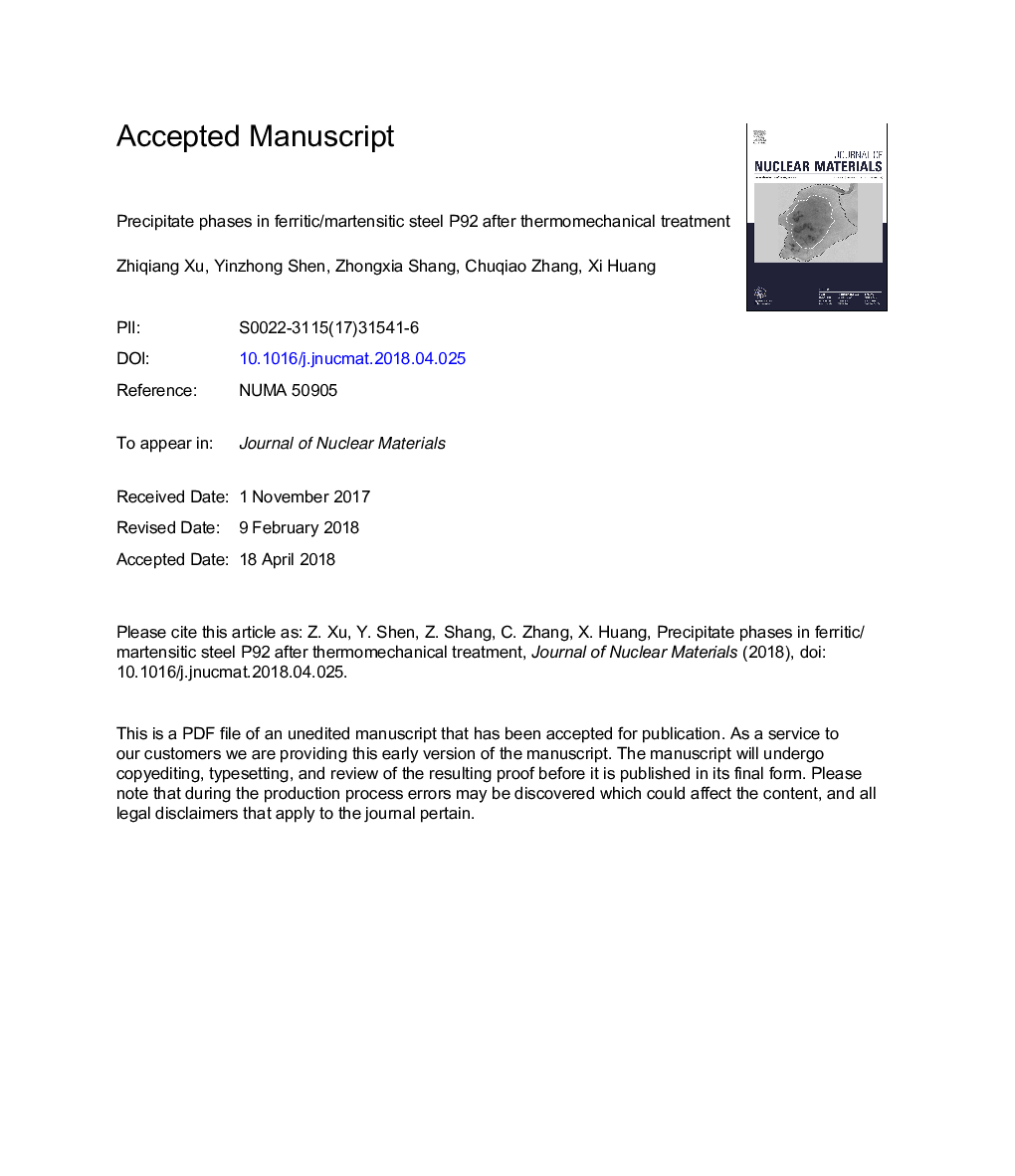| Article ID | Journal | Published Year | Pages | File Type |
|---|---|---|---|---|
| 7962939 | Journal of Nuclear Materials | 2018 | 40 Pages |
Abstract
Thermomechanical treatment (TMT) can effectively improve the mechanical properties of 9-12% Cr ferritic/martensitic (F/M) steels. To understand the effect of TMT on the creep properties of the steels, precipitate phases in the steels produced by TMT require investigations. A TMT process, including austenization at 1373â¯K (1100â¯Â°C) for 2â¯h, followed by warm-rolling at 923â¯K (650â¯Â°C) plus tempering at 923â¯K (650â¯Â°C) for 1â¯h, was applied on a commercial F/M steel P92. Precipitate phases in the steel after the TMT were investigated by transmission electron microscopy. Nano-sized Cr-rich M2(C,N) carbonitride with a high number density was the dominant phase. Large-sized Nb-rich M(C,N), (Nb0.8V0.13Cr0.05Mo0.02) (C,N), and nano-sized Nb-V-rich M(C,N) carbonitride phases with the same f. c.c. crystal structure were identified. Identified Cr-rich M23C6 carbides with a typical composition of (Cr0.68Fe0.25W0.04Mo0.03)23C6 have a large size and less amount. Modified Z-phase, Cr(V,Nb)N, with a body-centered tetragonal crystal structure, and Cr-rich M7C3 carbide with a simple orthorhombic crystal structure were also identified. The amount of Z-phase and Cr-rich M7C3 carbides was the least compared to other precipitate phases.
Related Topics
Physical Sciences and Engineering
Energy
Nuclear Energy and Engineering
Authors
Zhiqiang Xu, Yinzhong Shen, Zhongxia Shang, Chuqiao Zhang, Xi Huang,
